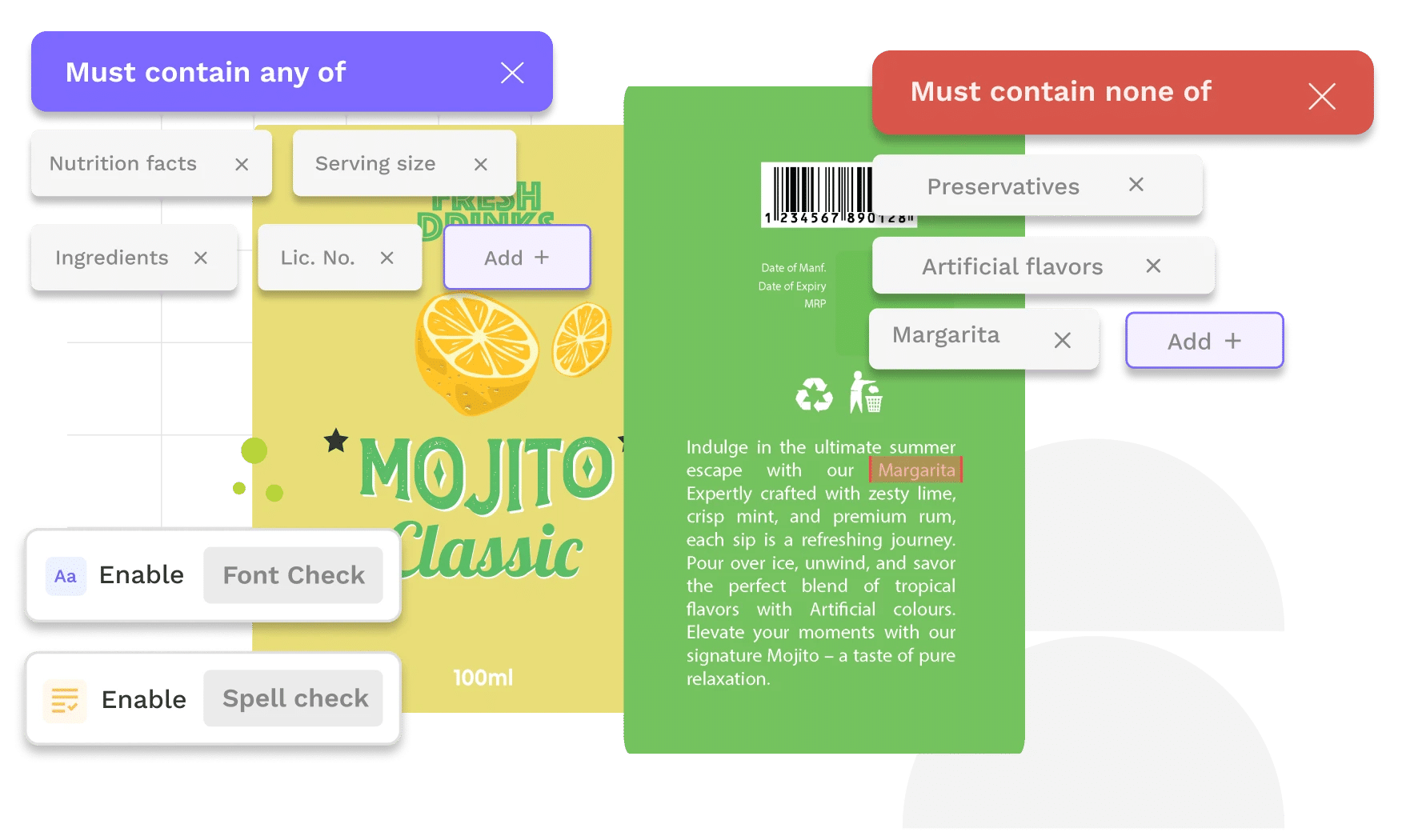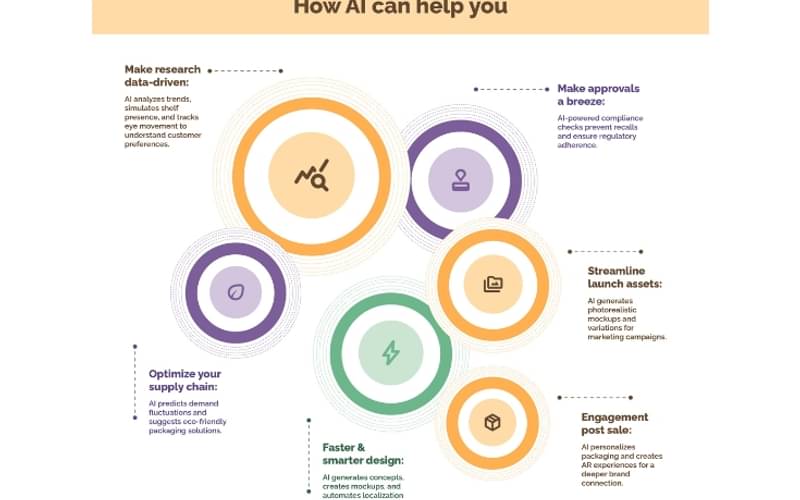Arjita Kulshreshtha spotlights AI for artwork management in design
Arjita Kulshreshtha of Artwork Flow (Bizongo) talks to Team WhatPackaging? about the evolution of packaging from traditional design methods and how AI could transform the industry
20 Jun 2024 | By WhatPackaging? Team
Team WhatPackaging? (WP?): What did things look like before artificial intelligence came into the mix?
Arjita Kulshreshtha (AK): For the last six years, I have worked closely at the intersection of branding, packaging, and technology. I have always been curious about how new technologies are changing the way we design packaging, and how customers perceive it.
In the past, my packaging design team would research and brainstorm to get the design just right, and avoid to get stuck in the back-and-forth of reviews and approvals. Launching new products does not stop with just an approved creative.
There are other parts of going to market — including production, inventory management, and compliance reviews — that slow the process down.
WP?: Now, how does AI fit into the process?
AK: We ran a survey on AI usage in creative operations in late 2023. 48% of the business leaders and supervisors are investing in paid AI tools.
AI is not just a buzzword of the moment, it has come a long way in the last few years. It can assist us with things ranging from writer’s block to medical imaging. In printing and packaging, it can ensure more data-driven and consumer-centric decisions.
WP?: How can AI optimise the research process in printing and packaging?
AK: Earlier, we relied on instincts and competitor research while designing. AI can up the design process with features like shelf simulation, image recognition, and eye-tracking software.
With shelf simulation, AI gathers customer data and shows you the design elements that resonate with your target audience. Image recognition helps to analyse existing packaging trends to identify what stands out on the shelves. The eye-tracking software can track where customers’ eyes land on packaging — this reveals subconscious preferences that surveys might miss.
Understanding these visual fixations can help create packaging that communicates the brand message. The final, and most important AI use in printing and packaging design is predictive analytics. AI can look into sales data and market trends to inform packaging design decisions.
WP?: In terms of design, how can AI help, especially since it cannot replace the creative process entirely?
AK: Design is the heart and soul of packaging but it can be time-consuming and iterative regardless of the industry or geography. Its biggest impact on the design stage is to make the process faster and more efficient.
One of the most exciting AI applications is to generate initial concepts and mood boards. You could feed your brand guidelines, expectations, and target market into an AI tool to generate design drafts your design team can then use as inspiration or even build upon. While AI can never fully replace the quality and standards of a studio setup, it can help you generate packshots and mockups.
Another major challenge in packaging design is localisation. Brands often require multiple versions of their packaging for different markets, with slight tweaks to comply with local regulations or translate text into local languages. This process can be tedious and prone to errors. By feeding the base design and specific requirements for each market into an AI tool, designers can automate the creation of these variants so they can focus on the more creative tasks.
The AI can translate text, change calls to action, and ensure compliance with local regulations, all while maintaining the core design elements. This reduces the time it takes to get packaging ready for international and regional markets, and frees your design team from the mundanity of creating countless variations of the same visual.
WP?: How does AI fit into the approval and launch processes?
AK: Reviews and approvals are long drawn out in print and packaging circles with errors, bottlenecks, and prolonged iterations. Artwork management platforms can make packaging reviews efficient and speed up the process with features like proofing, workflow automation, and version control.
At Artwork Flow, we use AI to take this one step further. One of our features, ComplyAI, helps you avoid product recalls with AI-powered label compliance. Regulatory affairs teams can set up customised rules based on the regulations your brand needs to comply with, be it the FSSAI, the FDA, or Schedule M.
The product may be designed, produced, and ready to hit the shelves. However, launching a product requires several materials, including high-quality visuals for websites, social media campaigns, and more. Creating launch assets involves a design effort alongside scheduling photoshoots, hiring photographers and stylists, and waiting for post-production edits.
Once again, AI can assist with creating photorealistic mockups to add to mood boards, generating variations of the same launch visual to use across marketing channels, and tweaking packshots to check out different elements, messaging, and even product angles in a virtual sandbox before heading to the studio.
WP?: Can predictive intelligence be useful in the supply chain?
AK: By studying past sales data and market trends, AI can predict demand fluctuations with accuracy. This will help you optimise your inventory levels, prevent shortages that frustrate customers, and eliminate overstocking. With AI, you can ensure you have the right amount of inventory available and customer satisfaction and profitability.
Sustainability is another area AI can help with. AI can identify areas where material wastage occurs. Be it through identifying larger box sizes where a smaller one would suffice or through offering lighter packaging alternatives, AI can suggest sustainable packaging solutions.
WP?: AI can fit into the developmental phases in print and packaging, but how would it fit into the customer experience?
AK: AI can help you engage with consumers even beyond the shelf through personalised packaging and augmented reality (AR). Personalised packaging has takers and also its naysayers.
However, brands with customer data and their consent can consider personalising packaging to the customers’ interests to stand out from their competitors. AR, combined with AI takes personalisation to the next level.
You may have seen food brands add QR codes to packaging that reveal recipes when scanned. Such AR experiences not only enhance user experiences but also provide a valuable brand touchpoint. AI and other technology act as a bridge between brands and consumers in the post-sale stage. By employing these strategies, you can create a deeper connection with your customers, increase brand loyalty, and leave a lasting impression in a crowded marketplace.

ProductWatch: Artwork Flow’s ComplyAI
Labels do more than convey information; creating compliant packaging is a complex and meticulous task. ComplyAI is an AI native label compliance software developed by Artwork Flow. It helps brands comply with various regulations and go to market faster by automating the packaging review process with AI.
By using AI algorithms, the software checks packaging labels against regulatory requirements, ensuring that labels are compliant with the latest standards. This helps to keep up with the rapidly-evolving regulatory landscape, to avoid costly compliance breaches and the risk of human error.
For companies operating on a global scale, keeping track of different regulatory requirements in various regions can be challenging. ComplyAI allows flexibility and ease of use for packaging teams across regulatory affairs, new product development, and marketing to set up customisable rules the labels need to comply with depending on their industry, countries of operation, and use cases.
The software features an intuitive, user-friendly interface that can be seamlessly integrated with existing systems and workflows. The interface is designed to streamline workflows, making the compliance process faster.

Arjita Kulshreshtha is director of business development and growth at Artwork Flow, an AI-driven SaaS platform of Bizongo


